Copper Cable Installation: Ultimate Guide to Safe and Efficient Network Setup
Are You Installing Copper Cables Safely? Find Out! The Importance of Safety in Copper Cable Network Installation
In today's interconnected world, a reliable and efficient network setup is crucial for both personal and professional success. With the increasing demand for high-speed internet and data transmission, copper cable installation has become a vital component of any network infrastructure. However, installing copper cables incorrectly can lead to a range of issues, from reduced network performance to even complete system failures.
In this comprehensive guide, we will walk you through the process of copper cable installation, highlighting the importance of proper planning, selection of the right materials, and execution of the installation. From understanding the different types of copper cables to ensuring a safe and secure installation, we'll cover all the essential steps to help you set up a robust and efficient network that meets your needs.
Whether you're a seasoned IT professional or a DIY enthusiast, this guide will provide you with the knowledge and expertise necessary to install copper cables with confidence and ensure your network runs smoothly.
Table of Contents
- Safety Precautions When Working with Copper Cables
- Copper Cable Installation: Copper Cable Types and Specifications
- Preparing the Copper Cable Installation Site
- Measuring and Cutting Copper Cables
- Crimping and Termination Techniques
- Installing Copper Cable Connectors
- Routing and Securing Copper Cables
- Avoiding Common Mistakes in Copper Cable Installation
- Testing and Troubleshooting Copper Cable Issues
- Tips for Efficient Network Setup with Copper Cables
- The Role of Copper Cable in Modern Network Infrastructure
- Best Practices for Cable Management and Organization
- Final Thoughts
Safety Precautions When Working with Copper Cables
When working with copper cables, safety should always be the top priority. Copper cables, although commonly used, can be hazardous if not handled with care. They are prone to electrical shock, fire hazards, and physical injuries due to their brittle nature. As a result, it's crucial to take necessary precautions to ensure a safe working environment.
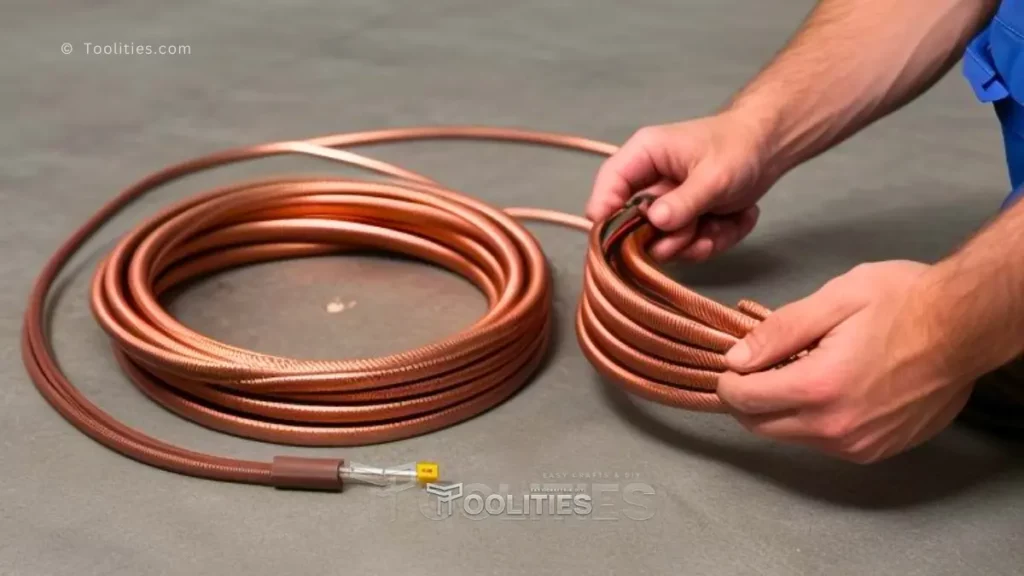
First and foremost, always wear protective gear when working with copper cables. This includes heavy-duty gloves, safety glasses, and a dust mask to prevent exposure to toxic fumes. Additionally, ensure that the work area is well-ventilated and free from any flammable materials. It's also essential to turn off the power supply to the affected area before commencing any work on the copper cables.
Furthermore, it's vital to handle copper cables with care, as they can be easily damaged or kinked, leading to signal loss or even complete failure. Always uncoil cables slowly and carefully, and avoid bending or twisting them excessively. When stripping the insulation, use the correct tools and techniques to prevent damage to the inner wires.
By following these safety precautions, you can minimize the risks associated with copper cable installation and ensure a safe and efficient network setup. Remember, safety should always be the top priority when working with electrical components, and by taking the necessary precautions, you can avoid costly mistakes and ensure a successful project.
Copper Cable Installation: Copper Cable Types and Specifications
As you embark on your copper cable installation journey, it's essential to have a solid grasp on the various types and specifications of copper cables available. With so many options on the market, it's crucial to understand the differences between them to ensure you're selecting the right cable for your specific network setup. This includes the type of application, distance requirements, and data transmission speed.
Take, for example, Category 5 (Cat 5) cables, which are commonly used for Ethernet connections. These cables are designed to support data transfer rates of up to 1 gigabit per second (Gbps) over distances of up to 100 meters. On the other hand, Category 6 (Cat 6) cables are capable of supporting faster data transfer rates of up to 10 Gbps, making them ideal for high-bandwidth applications such as VoIP and video streaming.
Other important specifications to consider include the cable's gauge, which refers to its thickness, and its shield type, which can be either foil shielded or braided shielded. Foil shielded cables offer better protection against electromagnetic interference (EMI), while braided shielded cables provide additional protection against physical damage.
When selecting copper cables, it's also important to consider the type of connectors and patch panels you'll need. RJ-45 connectors are commonly used for Ethernet connections, while T568A and T568B are the most widely used cable standards.
By understanding the various types and specifications of copper cables, you'll be well-equipped to set up a safe and efficient network that meets your specific needs. In the next section, we'll delve into the importance of proper cable testing and certification to ensure your network is running at its best.
Preparing the Copper Cable Installation Site
Before you begin the actual copper cable installation process, it's essential to prepare the installation site to ensure a safe and efficient setup. This crucial step often gets overlooked, but neglecting it can lead to frustrating delays, potential damage to equipment, and even safety hazards. A thorough preparation of the installation site involves several key tasks that must be carried out meticulously.
Firstly, ensure that the site is free from any obstacles, such as furniture, cables, or other obstructions that could hinder the installation process. This is particularly important when working in confined spaces, like data centers or server rooms, where every inch of clearance counts. Clearing the site also enables you to identify any potential tripping hazards or sharp edges that could cause accidents.
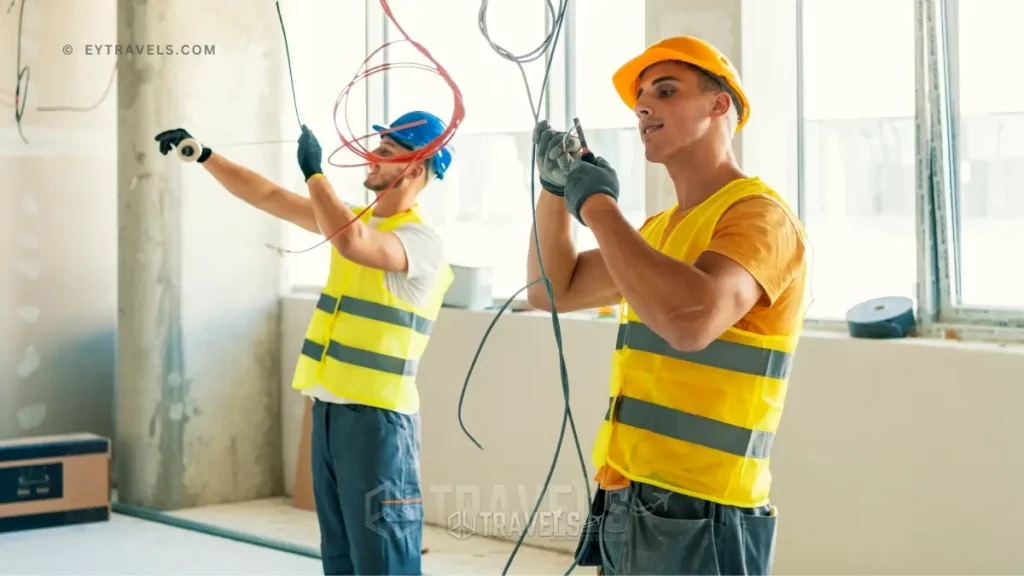
Next, take the time to assess the site's electrical infrastructure, including the power distribution and any existing cabling. This is crucial for identifying potential conflicts or hazards that could impact the installation. Make sure to check for any live wires or circuits that may need to be isolated or shut down before proceeding. A thorough understanding of the site's electrical layout will help you avoid costly mistakes and ensure a safer installation process.
Lastly, prepare the necessary tools and equipment required for the installation, such as cable ties, cable management systems, and the copper cables themselves. Having all the necessary gear within easy reach will streamline the process, reduce downtime, and minimize the risk of errors or omissions.
By taking the time to thoroughly prepare the installation site, you'll be able to tackle the copper cable installation process with confidence, ensuring a safe, efficient, and successful outcome.
Measuring and Cutting Copper Cables
The art of measuring and cutting copper cables – a crucial step in the copper cable installation process that requires precision and attention to detail. Without proper measurement and cutting, the entire network setup can be compromised, resulting in reduced performance, increased risk of errors, and even damage to the cables themselves. To avoid these pitfalls, it's essential to get it right from the start.
Measuring copper cables requires a combination of skill and know-how, as well as the right tools for the job. A good quality cable tester, for instance, can help you identify the correct length of cable needed for a particular installation. Additionally, a reliable measuring tape or cable length measuring device can ensure accurate measurements, reducing the risk of errors and rework.
When cutting copper cables, it's crucial to use the right tools and techniques to avoid damaging the cables or creating electrical hazards. A good quality cable cutter or strippers can help you make clean cuts and remove the necessary insulation, while a pair of safety gloves can protect you from any sharp edges or electrical shock.
By taking the time to measure and cut your copper cables carefully, you can ensure a safe and efficient network setup that meets the needs of your installation and provides reliable performance for years to come. With the right tools and techniques, you can avoid common mistakes and achieve professional-grade results, giving you peace of mind and a network that you can trust.
Crimping and Termination Techniques
The crimping and termination of copper cables is a crucial step in the installation process, as it ensures a secure and reliable connection between the cables and the devices they connect. Proper crimping and termination techniques are essential to prevent signal degradation, noise interference, and other issues that can compromise the integrity of your network.
When it comes to crimping, it's essential to use the right tools and techniques to avoid damaging the cables or causing poor connections. A high-quality crimper and the correct gauge of crimping tool are essential for a secure and reliable connection. The crimping process should be done with a gentle but firm touch, ensuring that the insulation is not damaged and the conductors are securely seated.
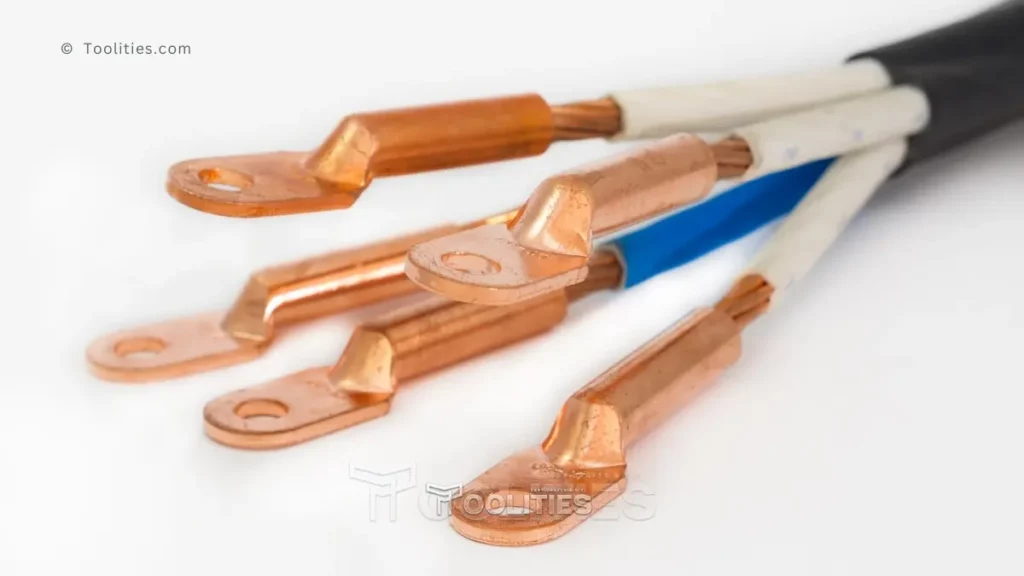
Termination techniques, on the other hand, involve connecting the cables to the network devices, such as switches, routers, and patch panels. This requires attention to detail and a thorough understanding of the connection requirements for each device. The termination process typically involves stripping the insulation, cutting the conductors to the correct length, and securing the cables to the device using the appropriate connectors and screws.
In addition to the physical termination process, it's also important to consider the electrical characteristics of the cables, such as impedance, attenuation, and crosstalk. Understanding these factors can help ensure that the cables are properly matched to the devices they are connecting, minimizing the risk of signal degradation and other issues.
By mastering the art of crimping and termination, you can ensure that your copper cable installation is secure, reliable, and efficient, providing a solid foundation for your network and protecting your investments in communication infrastructure.
Installing Copper Cable Connectors
The installation of copper cable connectors is a crucial step in setting up a reliable and efficient network. These connectors, also known as patch cords, are used to connect devices such as computers, routers, and switches to the copper cable infrastructure. Proper installation of these connectors is essential to ensure the smooth flow of data transmission and prevent costly downtime.
When installing copper cable connectors, it's essential to follow a few simple guidelines to guarantee a secure and efficient connection. First, ensure that the connectors are clean and free of debris before inserting them into the cable. This will prevent any damage to the cable or the connector itself. Next, align the connector with the cable carefully, taking care not to twist or bend the cable excessively. Finally, apply gentle pressure to secure the connector in place, taking care not to overtighten it.
Using high-quality copper cable connectors is also vital to ensure a reliable connection. Look for connectors that are designed specifically for copper cable installations and are made from durable materials that can withstand the rigors of daily use. Additionally, make sure to follow the manufacturer's instructions for installation and configuration to ensure that the connectors are properly set up for optimal performance.
By following these guidelines and using high-quality copper cable connectors, you can ensure a safe and efficient network setup that will withstand the demands of your organization. With a reliable and efficient connection, you can focus on your core business activities, knowing that your network infrastructure is secure and functioning as intended.
Routing and Securing Copper Cables
As you navigate the complex network of copper cables, proper routing and securing become crucial steps in ensuring the longevity and reliability of your setup. Failure to do so can lead to a plethora of issues, from tangles and knots to damage and even electrical hazards. To avoid these problems, it's essential to take the time to thoughtfully plan and execute the installation of your copper cables.
When routing your cables, consider the pathways they will take and the devices they will connect. Route cables along the most direct and convenient paths to minimize the risk of damage or interference. Keep in mind that cables should be run along walls, ceilings, or floors, rather than across open spaces or equipment, to prevent damage and reduce the risk of tripping hazards.
Once the cables are in place, secure them using cable ties, clips, or other fastening devices. This will prevent them from becoming loose or dangling, which can cause damage or create a tripping hazard. Be sure to leave enough slack in the cables to allow for future expansions or adjustments, while also minimizing excess length to reduce the risk of damage or tangles.
In addition to physical security, it's also important to consider the electrical safety of your copper cables. Make sure to follow proper grounding procedures and use surge protectors or other safety devices to protect your equipment from power surges or electrical storms. By taking the time to properly route and secure your copper cables, you can ensure a safe and efficient network setup that will serve you well for years to come.
Avoiding Common Mistakes in Copper Cable Installation
As you navigate the process of copper cable installation, it's easy to overlook the importance of attention to detail. However, small mistakes can have significant consequences, causing downtime, costly repairs, and even compromising the integrity of your entire network. In this section, we'll highlight the most common mistakes to avoid, so you can ensure a safe and efficient setup.
One of the most critical errors is failing to properly secure cables, which can lead to accidental damage, tripping hazards, and even electrical shocks. This is often due to insufficient cable management, resulting in a tangled mess of wires. To avoid this, make sure to use cable ties, cable clips, and other management tools to keep your cables organized and out of the way.
Another common mistake is neglecting to ground and bond the system, which is essential for ensuring the safety of your personnel and equipment. Grounding and bonding prevent electrical shocks by providing a safe path to earth for electrical currents. Failure to do so can result in serious consequences, including electrical shock, equipment damage, and even fatalities.
Additionally, improper termination techniques can also lead to issues. This includes using the wrong type of connectors, not following proper termination procedures, and not testing connections thoroughly. Proper termination is crucial for ensuring the integrity of your network, and any mistakes can result in signal degradation, data loss, and equipment failure.
By being aware of these common mistakes and taking steps to avoid them, you can ensure a safe, efficient, and reliable copper cable installation. Remember, attention to detail is key, and taking the time to get it right upfront can save you from costly repairs and downtime down the line.
Testing and Troubleshooting Copper Cable Issues
As the final stage of your copper cable installation, testing and troubleshooting is crucial to ensure that your network is not only functional but also reliable and efficient. This is where most installers and technicians tend to rush through, but it's essential to take the time to thoroughly test each cable segment to identify and resolve any potential issues.
A comprehensive testing process should include checks for signal integrity, voltage levels, and continuity. This can be done using specialized test equipment such as cable testers, TDRs (Time Domain Reflectometers), and multimeters. These tools will help you detect any faults, such as open circuits, shorts, or impedance mismatches, and allow you to take corrective action.
During the testing phase, it's also important to verify that the cables are properly terminated and that the connections are secure. A loose or faulty connection can cause signal degradation, data loss, or even complete network failure. By catching these issues early on, you can avoid costly repairs and downtime, and ensure that your network operates at optimal levels.
Troubleshooting is also a critical part of this process. If any issues are detected during testing, you'll need to identify the root cause and take corrective action. This may involve replacing faulty cables, adjusting connections, or adjusting system settings. By following a systematic approach to troubleshooting, you can quickly and efficiently resolve any problems and get your network back up and running smoothly. With a thorough testing and troubleshooting process, you can ensure that your copper cable installation is not only safe but also efficient, reliable, and optimized for maximum performance.
Tips for Efficient Network Setup with Copper Cables
As you embark on your copper cable installation journey, it's crucial to ensure that your network setup is not only efficient but also safe. This is where attention to detail and a few clever tips come in handy. For instance, when setting up your network, make sure to use the correct gauge of copper cable for your specific application. Using a cable that's too thin or too thick can lead to signal loss, reduced data transfer rates, and even damage to your equipment.
Additionally, it's vital to label your cables correctly, both during installation and once the setup is complete. Labeling your cables helps you quickly identify which cable is connected to which device, reducing the risk of errors and simplifying troubleshooting in case of any issues. A well-labeled network is a happy network!
Another crucial aspect of efficient network setup is ensuring that your cables are properly terminated. Proper termination is critical for maintaining signal quality and preventing signal loss. When terminating your cables, make sure to use the correct termination method for your specific type of cable and equipment.
By following these simple tips, you can ensure a safe and efficient copper cable installation that meets your network's needs and helps you stay connected. Remember, a well-designed network is the backbone of any successful communication system, and attention to detail is key to achieving optimal performance.
The Role of Copper Cable in Modern Network Infrastructure
In today's fast-paced digital age, the foundation of any robust network infrastructure is the humble copper cable. Despite the rise of fiber-optic and wireless technologies, copper cables remain an essential component of modern network setup, providing a reliable and efficient means of transmitting data, voice, and video signals. With their widespread adoption in homes, offices, and data centers, copper cables have become the bedrock of communication and connectivity.
From Ethernet connections to telephony and security systems, copper cables play a vital role in the seamless transmission of data, ensuring that our devices, applications, and services remain connected and operational. Their ability to transmit high-speed data, combined with their affordability and ease of installation, make them an attractive option for network architects and IT professionals.
Furthermore, copper cables have undergone significant advancements in recent years, with the development of newer technologies such as Cat 6A and Cat 7, which offer increased bandwidth and faster data transfer rates. These newer generations of copper cables are designed to meet the demands of modern network applications, including cloud computing, big data, and IoT devices.
As we move forward in the digital landscape, the importance of copper cables in network infrastructure will only continue to grow. Whether you're setting up a new network or upgrading an existing one, understanding the role of copper cables in modern network infrastructure is crucial for ensuring a safe, efficient, and reliable connection. In the next section, we'll explore some best practices for installing and maintaining copper cables to ensure optimal performance and minimize downtime.
Best Practices for Cable Management and Organization
A crucial aspect of copper cable installation is proper cable management and organization. A tidy and structured network setup not only ensures ease of maintenance and troubleshooting, but also reduces the risk of damage to cables, connections, and equipment. A well-organized network is a reflection of a well-planned and executed installation.
Effective cable management involves a combination of physical and logical organization techniques. Physically, this means using cable ties, clips, and labels to keep cables secure, untangled, and easy to identify. This is particularly important in areas with high foot traffic or where cables may be prone to damage, such as near doorways or in high-traffic corridors.
Logically, cable organization involves creating a structured plan for cable placement, labeling, and tracking. This may involve creating a detailed map of the network, noting cable routes, location, and connections. This information can be stored digitally or in a physical binder, allowing for easy reference and updates.
Final Thoughts
By implementing best practices for cable management and organization, copper cable installers can ensure a safe, efficient, and reliable network setup that meets the needs of users, while also reducing the risk of costly downtime and maintenance issues down the line.
As you've navigated through our comprehensive guide to copper cable installation, you've gained the knowledge and confidence to set up a safe and efficient network for your business or home. From choosing the right cable types to ensuring proper termination and testing, we've covered every aspect of the process to help you achieve a reliable and high-performing network. With this guide as your reference, you're now equipped to handle even the most complex copper cable installation projects with ease and precision.

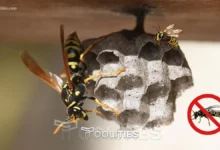
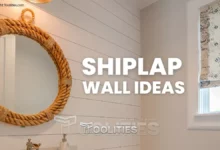
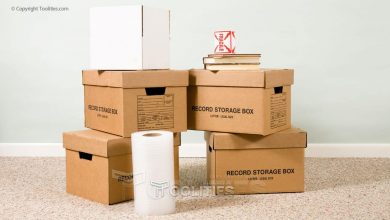

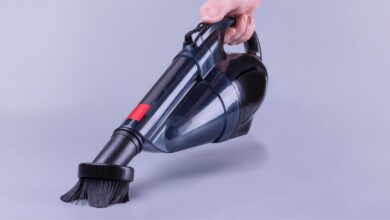

Quality content is the secret to attract the users to visit the web page, that’s what this web page
is providing.
I simply could not depart your website prior to suggesting that I actually loved the standard information a person supply to your guests?
Is going to be again steadily in order to investigate cross-check new posts
I love your blog.. very nice colors & theme.
Did you design this website yourself or did you hire someone to do it
for you? Plz respond as I’m looking to construct my own blog and would like to know where u got this from.
many thanks
Nice post. I was checking continuously this
blog and I’m impressed! Very useful information specially the last part :
) I care for such information a lot. I was looking for
this certain info for a long time. Thank you and best of luck.
Hello There. I found your weblog the use of msn. That
is an extremely well written article. I’ll make sure to bookmark it and come back to learn extra of your
useful information. Thanks for the post. I’ll certainly comeback.